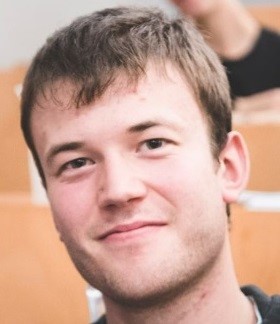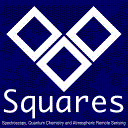 Nicolas Callebaut
Nicolas Callebaut
Background
- BA in chemistry, ULB (2013-2017)
- MA in chemistry, ULB (2017-2019)
- Master thesis: Calculs ab initio du potentiel d’ionisation vertical de stackings de bases d’ADN, ULB (2019)
- PhD student in Sciences, ULB, FRIA grant (2019-2024)
PhD project
Ionization and Charge Transfer processes in DNA base stackings: a quantum chemistry Study
The deoxyribonucleic acid (DNA), largely exposed to environmental influences such as the ultraviolet (UV) component of sunlight, is subject to severe ionizing radiation-induced damage whose formation process are not completely understood.
The photostability of the DNA against UV light is astonishing but photoexcitation and photoionization reactions still occur leading to severe damage that can cause a mutation of the cell which might be the beginning of the cancer disease.
Radiation-induced damage and repair processes involve charge transfer along the strand. Questions remain on all processes affecting the DNA (i.e. photoexcitation, photoionization and charge transfer processes in the DNA).
This project aims at improving on this by investigating, by quantum mechanics-based calculations, the photoionization, and the charge transfer process of different single stranded DNA sequences.
First, the vertical ionization energy will be determined depending on the sequence length and base order. This first activity will be innovative in its objective to provide a systematic study of the properties using an optimal level of theory.
The study of ionization process will be extended to the telomeric sequence, which is particularly sensitive to damage, as well as to sequences containing one or more methylated cytosine(s), a well-known mutational signature observed in cancer genomes.
Secondly, the charge transfer within three stacked guanines will be studied by multiconfigurational methods. This approach will allow a detailed study of the ground state and first excited states of the GGG sequence.
The structural and energetic details favouring the charge transfer will be determined.
Publications
See here.
Contact
Spectroscopy, Quantum Chemistry and Atmospheric Remote Sensing (SQUARES) (https://squares.ulb.be//),
Université Libre de Bruxelles, CP160/09
50 Av. F.D. Roosevelt, B-1050 Belgium
E-mail

 Nicolas Callebaut
Nicolas Callebaut